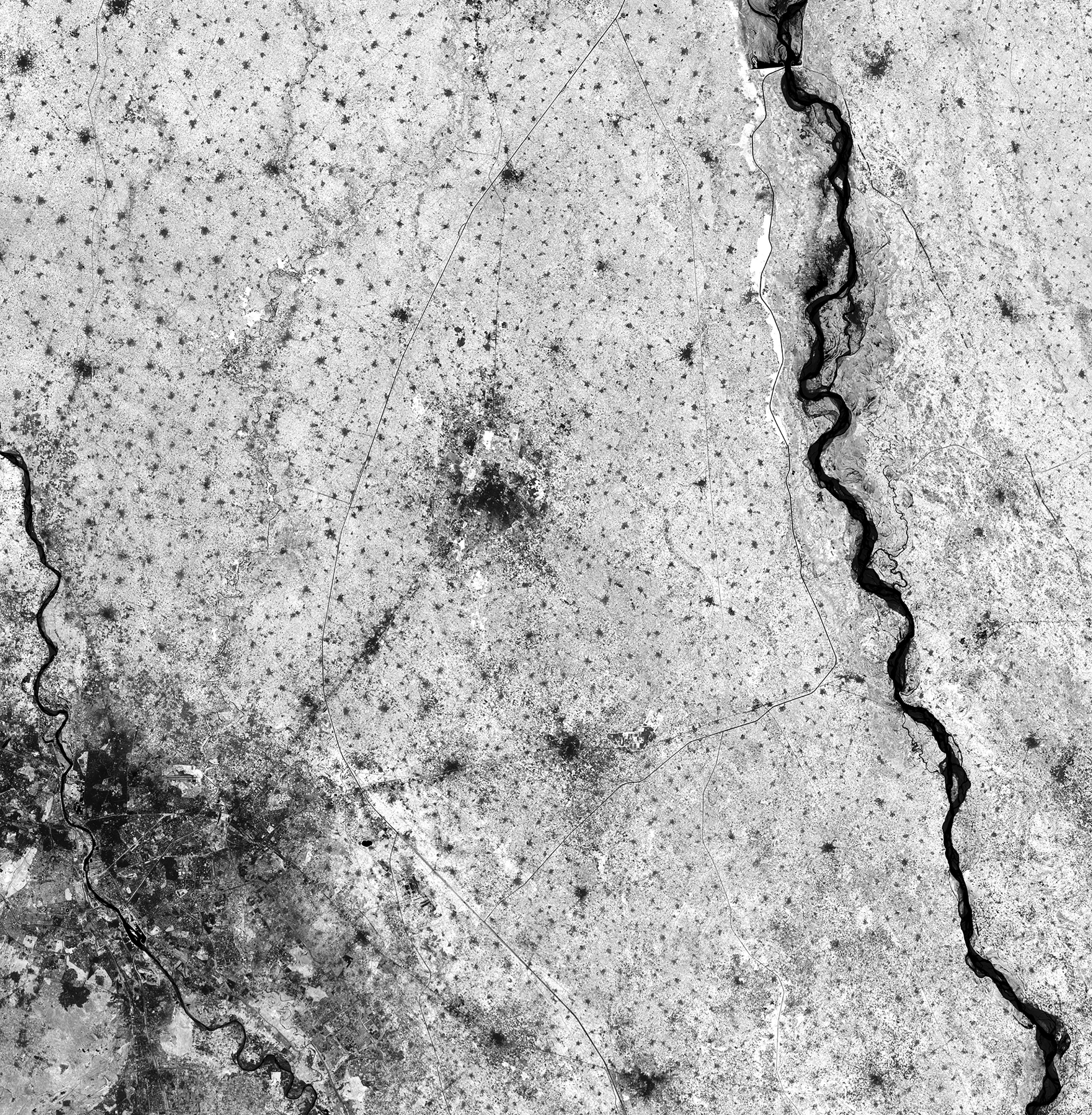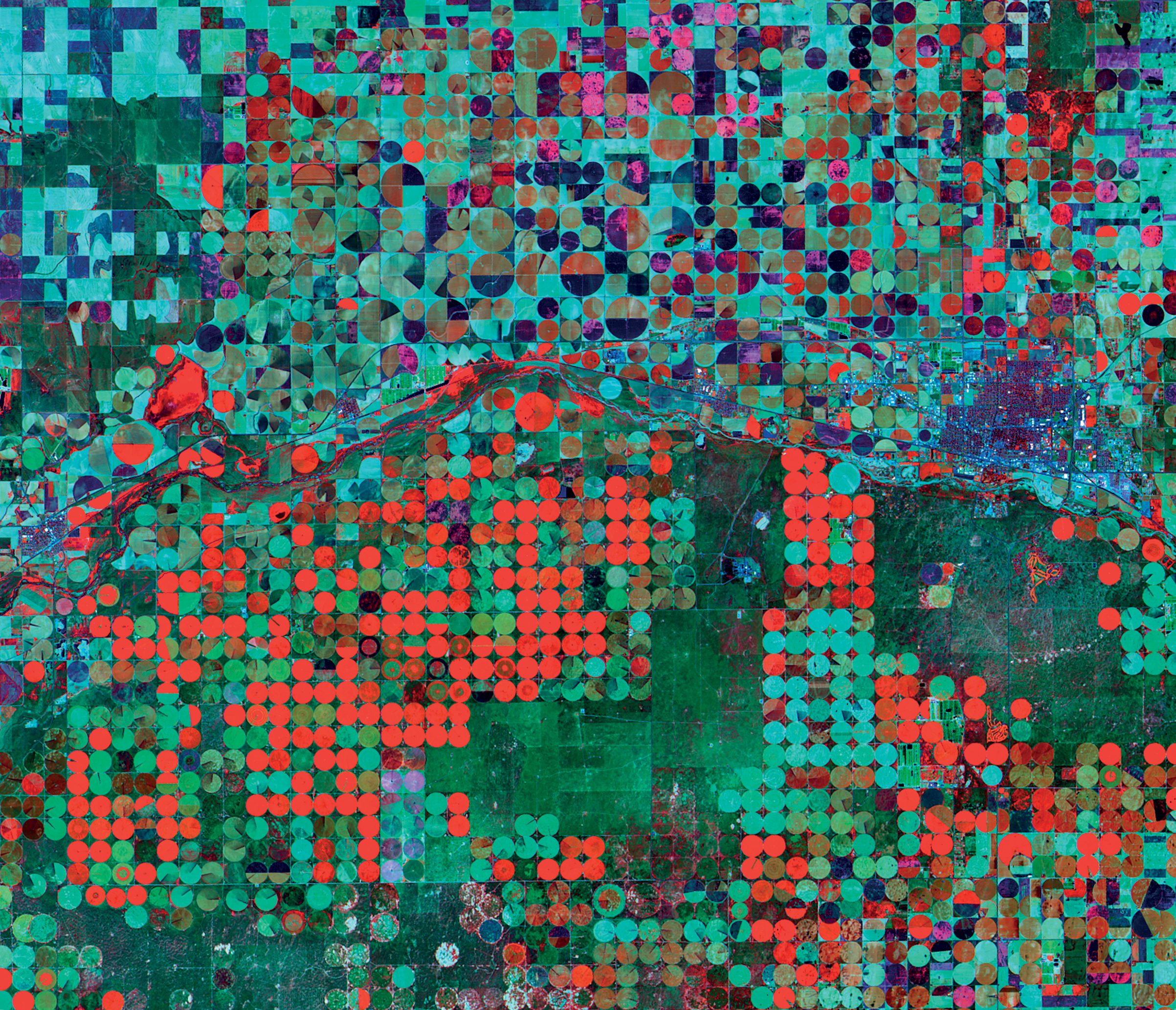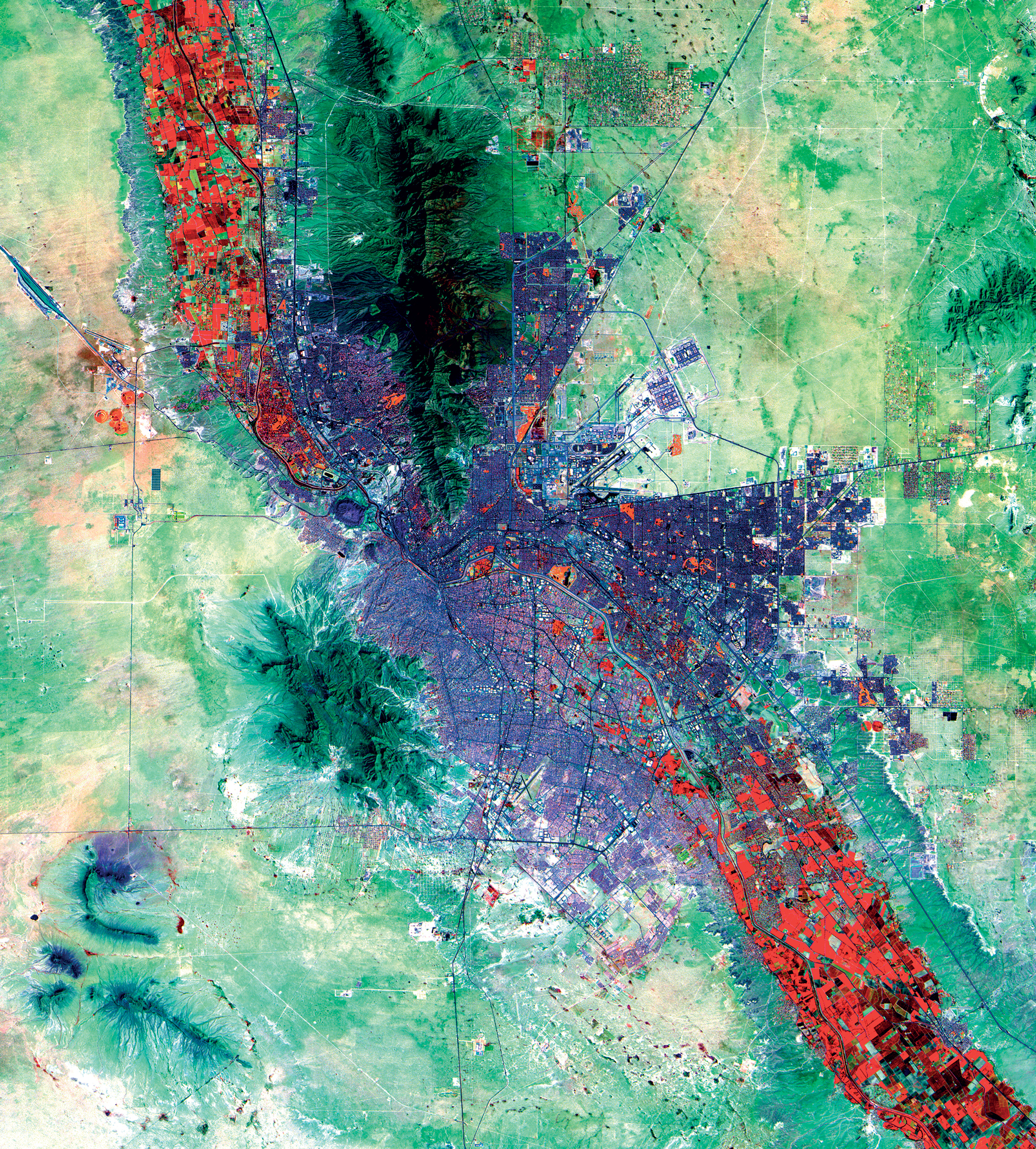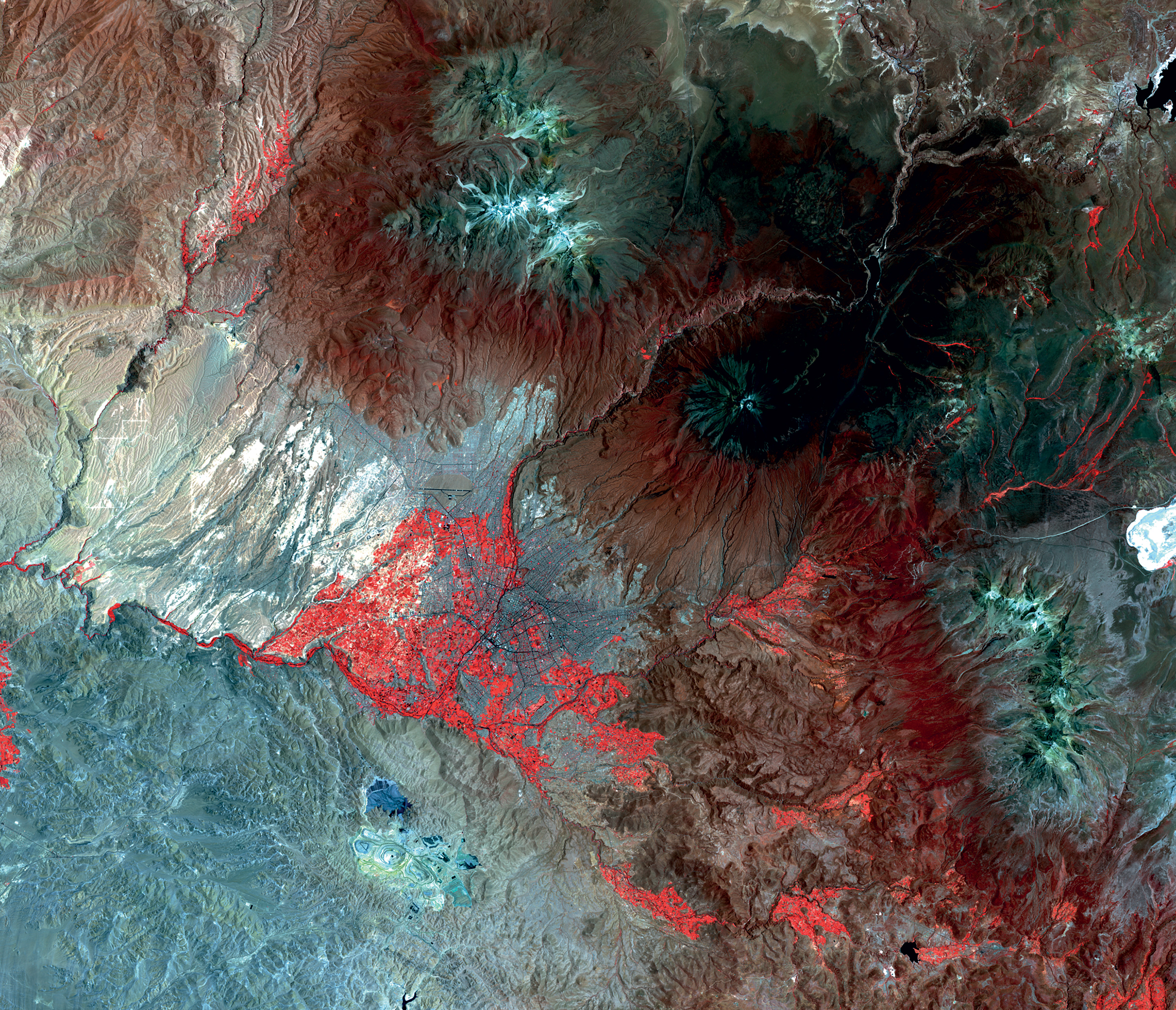Most of the human population now lives in urban areas. But the growth of these urban landscapes is something that we can only partially appreciate from the ground. Instead, we should also look from the sky. Imagery produced from satellites and infrared technology shows the ingenuity and expansion of cities, the symbiosis of urban and natural landscapes and how a changing climate is also changing the places most humans call home. Our goal as remote-sensing scientists — and the aim of our new book, [tempo-ecommerce src=”https://www.amazon.com/City-Unseen-Visions-Urban-Planet/dp/030022169X” title=”City Unseen: New Visions of an Urban Planet” context=”body”] — is to offer insights from these satellite-enabled perspectives.



Two images in the book, presented here, recorded some two decades apart, show Las Vegas, Nev., expanding west. Though we’ve witnessed this expansion during our own respective visits to the city (including remote searching for an all-you-can-eat buffet after rock climbing nearby), it was harder to appreciate how this growth tapped a vital resource: water. In the satellite images, we also see clearly Lake Mead’s retreat. Las Vegas’s story of expansion is not unique; constructing and operating cities requires massive resources.



For this reason, we analyze satellite data not only from places like Seoul, but also from small mining towns, rainforests and other remote reaches of the planet. To understand which attributes of cities increase their chances of success or their fragility, we need to see from where they source timber, ore, rare metals and other raw materials.
One feature of satellite data that helps us depict and analyze this resource use is the ability to “see” beyond the frequencies of light humans can perceive. Just as dogs can hear frequencies of sound that humans cannot, remote-sensing provides information beyond what we can see with our naked eyes. Beyond the borders of the visible spectrum of light, encompassing all the colors of the rainbow, there are also the longer wavelengths of near and far infrared.



These other wavelengths help us explore the health of vegetation, the water content of soils, the heat emanating from a concrete surface or the pollutants in the atmosphere. Looking with our eyes only, we see red wavelengths of light as red, green wavelengths as green and, you guessed it, blue wavelengths as blue. When “seeing like a satellite,” though, we don’t have to follow this recipe. Looking closely at the Osh, Kyrgyzstan, image, you are seeing longer shortwave infrared wavelengths displayed as red, shorter shortwave infrared wavelengths as green and visible red wavelengths as blue. By changing our perspective, urban areas become purple, and the image accentuates the differences between urban infrastructure and vegetated land.
Vegetation in forests and crops reflect infrared frequencies of light. By translating satellite-recorded infrared readings into red in the images we produce, we can see more clearly the fishbone pattern of deforestation in Paramaribo, Suriname; the disorder in abandoned Ukrainian cropland in the 30 years after the Chernobyl nuclear power plant reactor meltdown; or the spread of building materials over vegetation after a tornado devastated Joplin, Miss., in 2011.

These images can also highlight humanity’s impact. As we show in the book and the images here, with the right satellite image and analysis, the angularity of streetscapes in Detroit, Mich., become apparent to us; we are able to detect differences in street structures and building materials between the border cities of Mexicali in Mexico and Calexico in the United States; geological folds called anticlines and synclines in the oil and gas-rich region of Chongqing, China, are revealed; we can even “see” air pollution over Beijing; and we can gain many more insights, seen in the images here and in others in the book.
As NASA astronaut Kathryn Sullivan said of our work, satellite images can make “familiar places on Earth suddenly seem foreign” and reshape our understanding of them. And understanding cities at this level has never been more important. As an area equivalent to 20,000 American football fields is converted irreversibly to urban areas each day, we need many perspectives to make better decisions about our urban futures. — Karen C. Seto and Meredith Reba

Seto is the Frederick C. Hixon Professor of Geography and Urbanization Science at Yale University and a member of the National Academy of Sciences; Reba is research associate at the School of Forestry and Environmental Studies at Yale University; they are coauthors of [tempo-ecommerce src=”https://www.amazon.com/City-Unseen-Visions-Urban-Planet/dp/030022169X” title=”City Unseen: New Visions of an Urban Planet” context=”body”], from which these images are taken with permission.
- Why Trump’s Message Worked on Latino Men
- What Trump’s Win Could Mean for Housing
- The 100 Must-Read Books of 2024
- Sleep Doctors Share the 1 Tip That’s Changed Their Lives
- Column: Let’s Bring Back Romance
- What It’s Like to Have Long COVID As a Kid
- FX’s Say Nothing Is the Must-Watch Political Thriller of 2024
- Merle Bombardieri Is Helping People Make the Baby Decision
